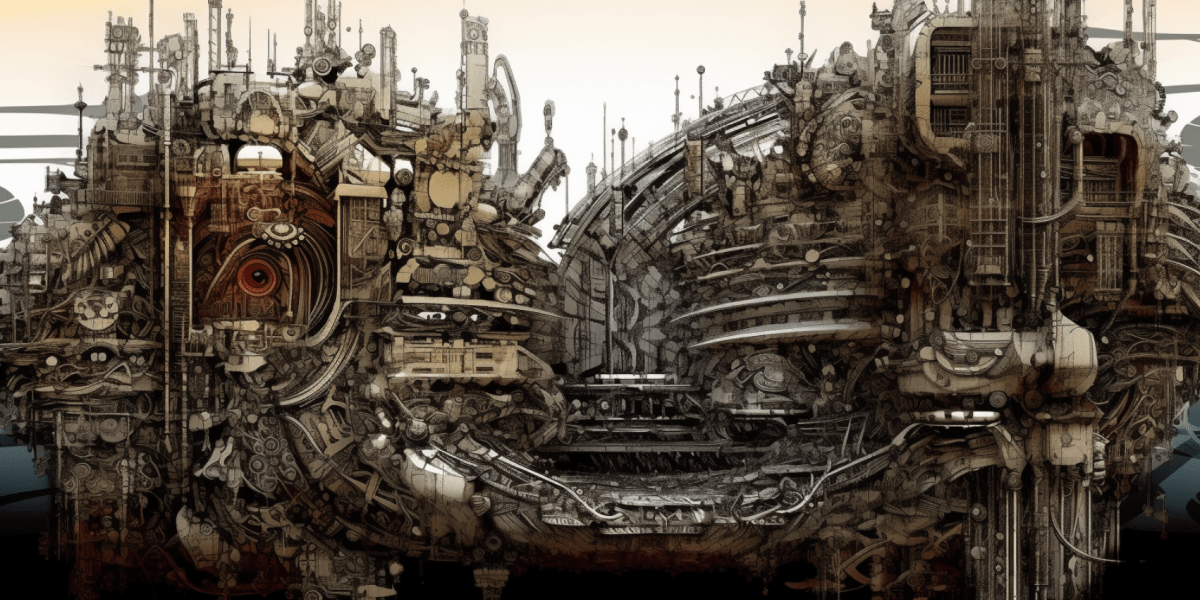Systems engineering and requirements management are two important processes in any industry that involves complex and multidisciplinary product development. They both aim to ensure that the final product meets the needs and expectations of the stakeholders and functions as intended. However, they have different definitions, roles, and activities in the product development process. This article will explain and compare systems engineering and requirements management, and discuss their benefits and challenges. It will also provide some examples of how they are applied in different industries, such as aerospace, healthcare, software, etc.
Table of Contents
- What is requirements management?
- How requirements management vs systems engineering differ?
- Summary of the Key Aspects
- In Practice
- What is the difference between requirements management and requirements engineering?
- Benefits and challenges of systems engineering and requirements management
- Case Study: Requirements Engineering as a Subset of Systems Engineering in the Automotive Industry
- Conclusion
What is requirements management?
Requirements management is a sub-discipline of systems engineering that focuses on planning, organizing, controlling, and communicating the requirements of a system. It involves defining the scope, objectives, and strategy of the requirements engineering process, as well as establishing the roles, responsibilities, and relationships of the stakeholders.
Requirements management also involves monitoring and measuring the progress and quality of the requirements engineering activities, as well as resolving any issues or conflicts that may arise among the stakeholders or the requirements.
How requirements management vs systems engineering differ?
I often get asked what is the difference between systems engineering and requirements management. I thought I would share my understanding of these two processes and how they are applied in different industries.
Systems engineering and requirements management are both essential for complex and multidisciplinary product development. They both aim to ensure that the final product meets the needs and expectations of the stakeholders and functions as intended. However, they have different definitions, roles, and activities in the product development process.
Requirements management and systems engineering are closely related, but they have different levels of abstraction and granularity in the system development process. Requirements management covers the high-level aspects of the requirements engineering process, such as planning, organizing, controlling, and communicating.
Summary of the Key Aspects
- Systems engineering covers the whole system life cycle, from conception to disposal, while requirements management covers the high-level aspects of the requirements process, such as planning, organizing, controlling, and communicating.
- Systems engineering covers the low-level aspects of the system development process, such as designing, developing, integrating, testing, and supporting. Requirements management provides the framework and guidance for the requirements engineering activities, while systems engineering provides the implementation and execution of the system development activities.
- Systems engineering covers the whole system life cycle, from conception to disposal, while requirements management covers the high-level aspects of the requirements process, such as planning, organizing, controlling, and communicating.
- Systems engineering deals with technical and non-technical aspects of the system, such as cost, schedule, quality, safety, reliability, usability, etc., while requirements management provides the framework and guidance for the requirements process.
- Systems engineering and requirements management have many benefits, such as improving the quality, efficiency, and effectiveness of the product development process, reducing the risks of errors, defects, failures, and rework, and facilitating communication, collaboration, and coordination among different disciplines and stakeholders.
- Systems engineering and requirements management also have many challenges, such as requiring a high level of expertise, experience, skills, effort, time, resources, alignment, consistency, traceability, adaptability, flexibility, responsiveness, integration, interoperability, and compatibility.
In Practice
In various projects in different industries, such as aerospace, healthcare, software, I have seen how systems engineering and requirements management are applied in different ways. For example:
- In aerospace industry, systems engineering is very rigorous and formalized. It follows standards such as ISO 15288 or INCOSE SEBoK. It uses tools such as SysML or DOORS to model and manage the system architecture and requirements. It also involves extensive verification and validation activities to ensure the system safety and reliability.
- In healthcare industry, systems engineering is more agile and adaptive. It follows frameworks such as Lean or Scrum. It uses tools such as Jira or Confluence to manage the system backlog and documentation. It also involves frequent feedback loops and iterations to ensure the system usability and effectiveness.
- In software industry, systems engineering is more hybrid and customized. It follows methodologies such as waterfall or spiral. It uses tools such as UML or GitHub to design and develop the system software and components. It also involves continuous integration and delivery to ensure the system quality and performance.
These are just some examples of how systems engineering and requirements management are applied in different industries.
What is the difference between requirements management and requirements engineering?
Requirements management and requirements engineering are two related but distinct sub-disciplines of systems engineering. They both deal with the requirements of a system, but they have different goals, scopes, and activities.
Requirements engineering is the process of identifying, analyzing, specifying, validating, and managing the requirements of a system. It aims to ensure that the system meets the needs and expectations of the stakeholders and functions as intended. Requirements engineering involves eliciting the stakeholder needs, documenting the requirements in a clear and consistent way, verifying that the requirements are correct and complete, validating that the requirements are feasible and acceptable, and tracing and controlling the changes to the requirements throughout the system life cycle.
Requirements management is the process of planning, organizing, controlling, and communicating the requirements of a system. It aims to ensure that the requirements engineering process is effective and efficient. It involves defining the scope, objectives, and strategy of the requirements engineering process, as well as establishing the roles, responsibilities, and relationships of the stakeholders, and also involves monitoring and measuring the progress and quality of the requirements engineering activities, as well as resolving any issues or conflicts that may arise among the stakeholders or the requirements.
In summary, requirements engineering focuses on what the system should do or provide, while requirements management focuses on how to do or provide it.

Benefits and challenges of systems engineering and requirements management
In this section, we will discuss the benefits and challenges of applying systems engineering and requirements management in the automotive industry.
| Benefits | Challenges |
|---|---|
| They help to ensure that the final product meets the needs and expectations of the stakeholders and functions as intended. | They require a high level of expertise, experience, and skills in various domains and technologies. |
| They help to reduce the risks of errors, defects, failures, and rework in the product development process. | They require a high level of effort, time, and resources to perform effectively and efficiently. |
| They help to improve the quality, efficiency, and effectiveness of the product development process. | They require a high level of alignment, consistency, and traceability among different levels and aspects of the system development process. |
| They help to facilitate communication, collaboration, and coordination among different disciplines and stakeholders involved in the product development process. | They require a high level of adaptability, flexibility, and responsiveness to changes in the system requirements, environment, or context. |
| They help to support decision making, trade-off analysis, and optimization of the product design and performance. | They require a high level of integration, interoperability, and compatibility among different system components, subsystems, or platforms. |
Case Study: Requirements Engineering as a Subset of Systems Engineering in the Automotive Industry
Evolution of Requirements Engineering
The concept of requirements engineering has undergone significant evolution over the years. Originally, the term ‘requirements engineer’ was introduced in the 1980s, primarily by professionals in the software industry.
This role was created to represent an individual responsible for defining and managing requirements in the context of software-intensive systems. As time went on, the concept of requirements engineering gained recognition and found its place in international standards.
Notably, it was incorporated into ISO/IEC TR 19759, also known as the Software Engineering Body of Knowledge (SWEBOK). Subsequently, requirements engineering was defined in ISO 29148 (Systems and Software Engineering – Life Cycle Processes – Requirements Engineering), and its application was detailed in ISO/IEC TR 24748-3 (Guide to the application of ISO/IEC 12207 – Software Life Cycle Processes).
It is worth noting that the term ‘requirements engineering’ is not explicitly present in ISO 12207 (Software Life Cycle Processes) or ISO 15288 (System and Software Engineering – System Life Cycle Processes), at least in the editions available at the time.
Defining Requirements Engineering
ISO 29148 provides a comprehensive definition of requirements engineering, categorizing it as an interdisciplinary function. In practice, requirements engineering serves as a mediator between the domains of the acquirer and supplier, facilitating the establishment and maintenance of requirements for the system, software, or service of interest.
Requirements engineering encompasses a wide array of activities, which include discovering, eliciting, developing, analyzing, determining verification methods, validating, communicating, documenting, and managing requirements. This robust definition highlights the depth and breadth of this field.
Distinguishing Requirements Engineering and Systems Engineering
While requirements engineering plays a crucial role in capturing, managing, and validating requirements, systems engineering takes on a broader set of activities and responsibilities. ISO 29148 acknowledges that there are minor differences between system and software activities but follows a structure aligned with systems engineering processes defined in ISO/IEC 15288.
Systems engineering, therefore, encompasses not only the meticulous handling of requirements but also orchestrates a comprehensive interplay between multiple domains, functions, and stakeholders.
Case Study in the Automotive Industry
The automotive industry provides a compelling case study for understanding the relationship between requirements engineering and systems engineering. In this sector, products such as modern vehicles are characterized by complexity, integrating various technologies, components, and disciplines.
The development of a modern automobile goes far beyond the mere specification of software requirements. It involves harmonizing mechanical, electrical, and software components, while also addressing safety, regulations, and customer expectations.
In the automotive industry, the term ‘requirements engineering’ often falls short in adequately capturing the scope and complexity of the work at hand. Instead, companies are increasingly adopting comprehensive systems engineering processes.
These processes integrate all relevant disciplines and responsibilities, ensuring a holistic approach to product development. By doing so, the automotive industry blurs the traditional boundaries between requirements engineering and systems engineering, ultimately resulting in more efficient and harmonious product development processes.
Conclusion
In conclusion, this article has shed light on the significance of systems engineering and requirements management in various industries. By comparing their roles and discussing their benefits and challenges, we have highlighted the critical roles they play in complex and multidisciplinary product development. Systems engineering takes a holistic approach, covering the entire system life cycle, while requirements management focuses on the high-level aspects of the requirements process. Both fields contribute to the success of projects by addressing technical and non-technical aspects, offering guidance, and providing a framework for effective management.
As we wrap up our exploration, we hope this article has served as a valuable resource, offering insights into these indispensable disciplines. We trust it has ignited your curiosity and encouraged further exploration in the realms of systems engineering and requirements management. The future holds exciting possibilities, and as these fields continue to evolve, they will remain pivotal in shaping the landscape of innovation and problem-solving across diverse industries.
Here is a list of references for you to explore this subject further:
- Systems Engineering Fundamentals: A comprehensive guide to the principles and practices of systems engineering, published by the Defense Acquisition University Press.
- Requirements Engineering: A Good Practice Guide: A practical and accessible book on the methods and techniques of requirements engineering, written by Ian Sommerville and Pete Sawyer.
- Systems Engineering Body of Knowledge (SEBoK): A collaborative online resource that provides a comprehensive and authoritative guide to the knowledge, skills, and applications of systems engineering.







